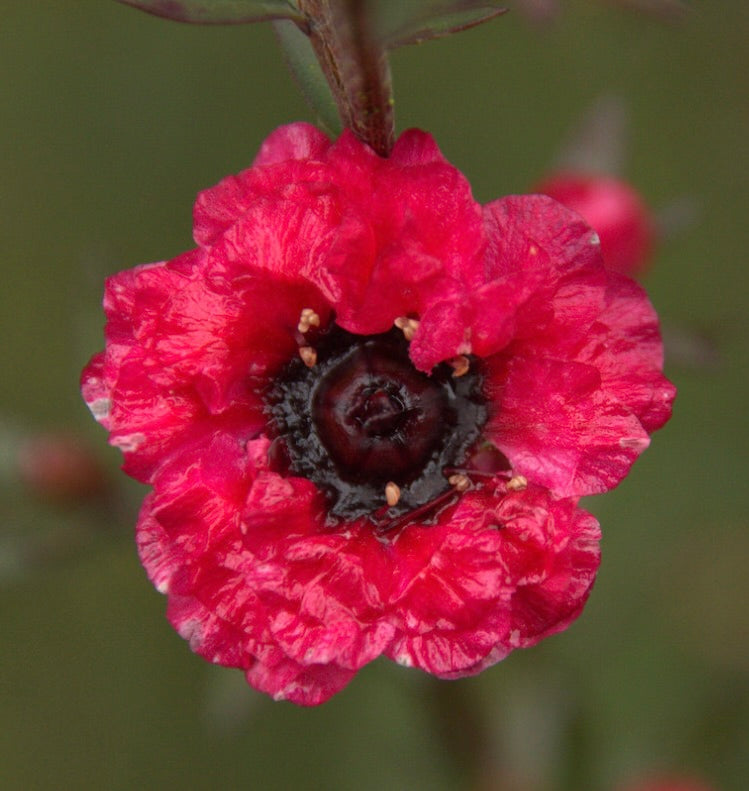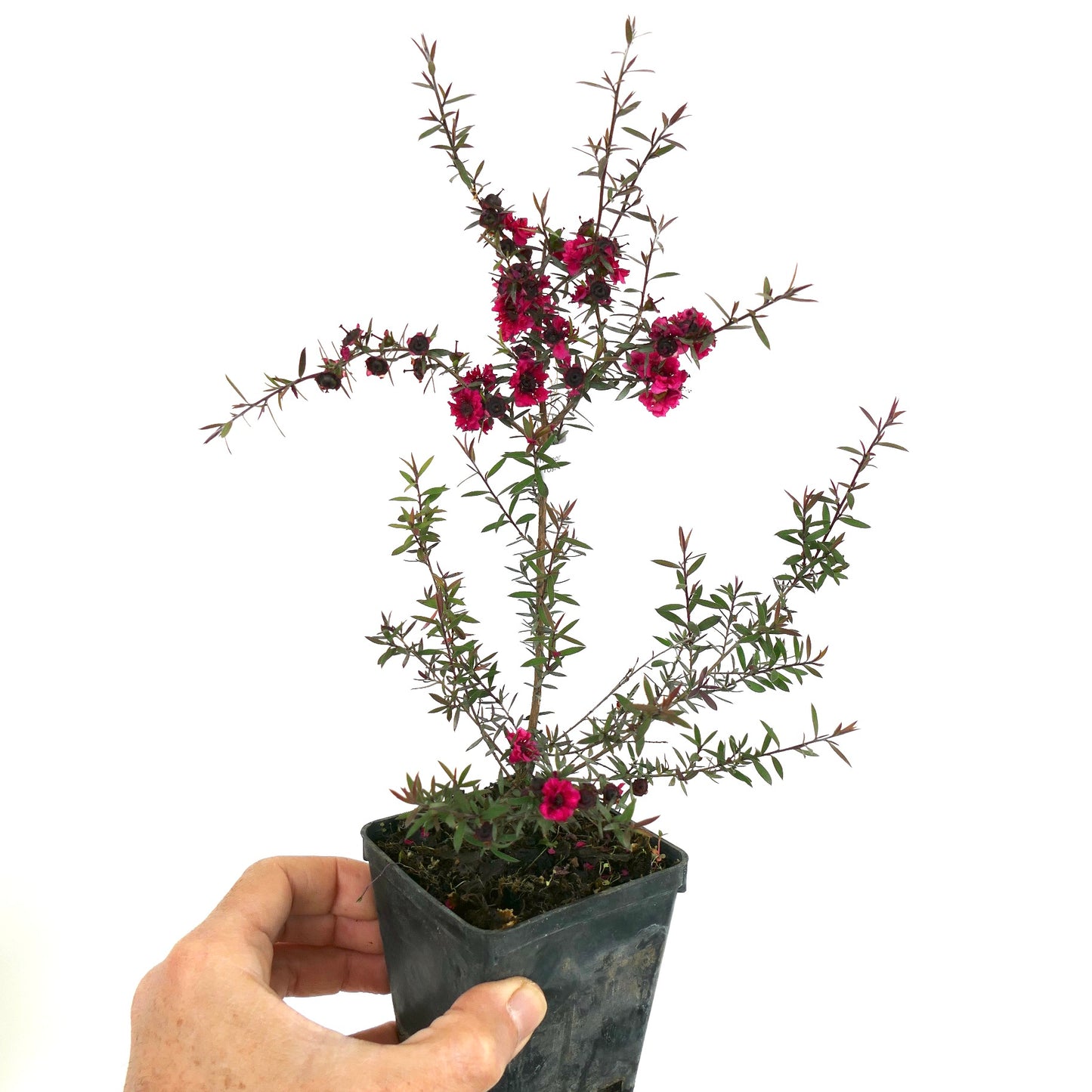Leptospermum scoparium cv. "red damask" 10-15cm
Leptospermum scoparium cv. "red damask" 10-15cm
Couldn't load pickup availability
Plant Description
Leptospermum scoparium, commonly known as Manuka or New Zealand Tea Tree, is an evergreen shrub or small tree that hails from New Zealand and Australia. This plant is renowned for its striking foliage, attractive flowers, and the production of Manuka honey, a prized medicinal honey made by bees that pollinate its blossoms. Manuka typically grows to a height of 2-5 meters (6-16 feet) and features small, narrow, aromatic leaves that are often dark green and have a pleasantly spicy fragrance when crushed. In late spring to summer, it produces an abundance of small, five-petaled flowers, which can be white, pink, or deep red, depending on the cultivar. These flowers are not only visually appealing but also provide nectar for honeybees, resulting in the highly valued Manuka honey. In addition to its honey-producing qualities, Leptospermum scoparium is also used for its essential oil and as an ornamental plant in gardens and landscapes.
Cultivation:
-
Climate: Manuka is well-suited to temperate and Mediterranean climates. It is hardy in USDA zones 8-11 but can be grown in other zones with winter protection.
-
Sunlight: Plant your Leptospermum scoparium in a location that receives full sun. It requires abundant sunlight for healthy growth and prolific flowering.
-
Soil: Provide well-draining, acidic to slightly alkaline soil with good moisture retention. Manuka prefers soil with a pH range of 5.5 to 7.0.
-
Watering: Water your plant moderately, allowing the soil to dry out slightly between waterings. It is drought-tolerant once established, but regular moisture is beneficial, especially during dry spells.
-
Mulching: Apply a layer of organic mulch around the base of the plant to retain soil moisture, regulate soil temperature, and suppress weeds. Keep the mulch away from the plant's trunk.
-
Fertilization: Manuka doesn't require heavy fertilization. A light application of a balanced fertilizer in early spring can provide essential nutrients.
-
Pruning: Prune your Leptospermum scoparium after flowering to shape it, remove dead or overcrowded branches, and encourage bushier growth. Pruning can also help maintain a tidy appearance.
-
Pests and Diseases: Manuka is relatively resistant to pests and diseases. However, watch for issues like scale insects or powdery mildew, and address them if they appear.
-
Spacing: When planting multiple Manuka shrubs, space them at least 1-2 meters (3-6 feet) apart to allow for their mature size and to create an attractive grouping.
-
Propagation: You can propagate Leptospermum scoparium from seeds or semi-hardwood cuttings taken in late summer or early autumn. Plant the cuttings in well-draining soil or a suitable rooting medium.
Leptospermum scoparium, Manuka or New Zealand Tea Tree, is a versatile and appealing plant known for its aromatic foliage, colorful blossoms, and its role in producing prized Manuka honey. Whether you're cultivating it for its ornamental beauty, honey production, or essential oil, it can be a valuable addition to your garden or landscape. With proper care and attention to its specific requirements, it can thrive and become a cherished feature of your outdoor space.
IMPORTANT: Please be aware that picture 1 show adult plant not for sale, the offer is for a plant in the dimension indicated in title description, like the one in picture 2.
Disclaimer: Please keep on mind that the plant may have grown since pictured. Also be aware that most plants change across seasons. If present foliage could have been fallen or change in its color.
Botanical family: Myrtaceae
Botanical genus: Leptospermum
Botanical species: Leptospermum scoparium
SKU:BA-0765-S
Cultivation
Cultivation
Additional information
Additional information
Plant Height: 10-15cm
Plant Diameter:
Picture Taken on:
Pot Size:
Grafted/Not Grafted:




